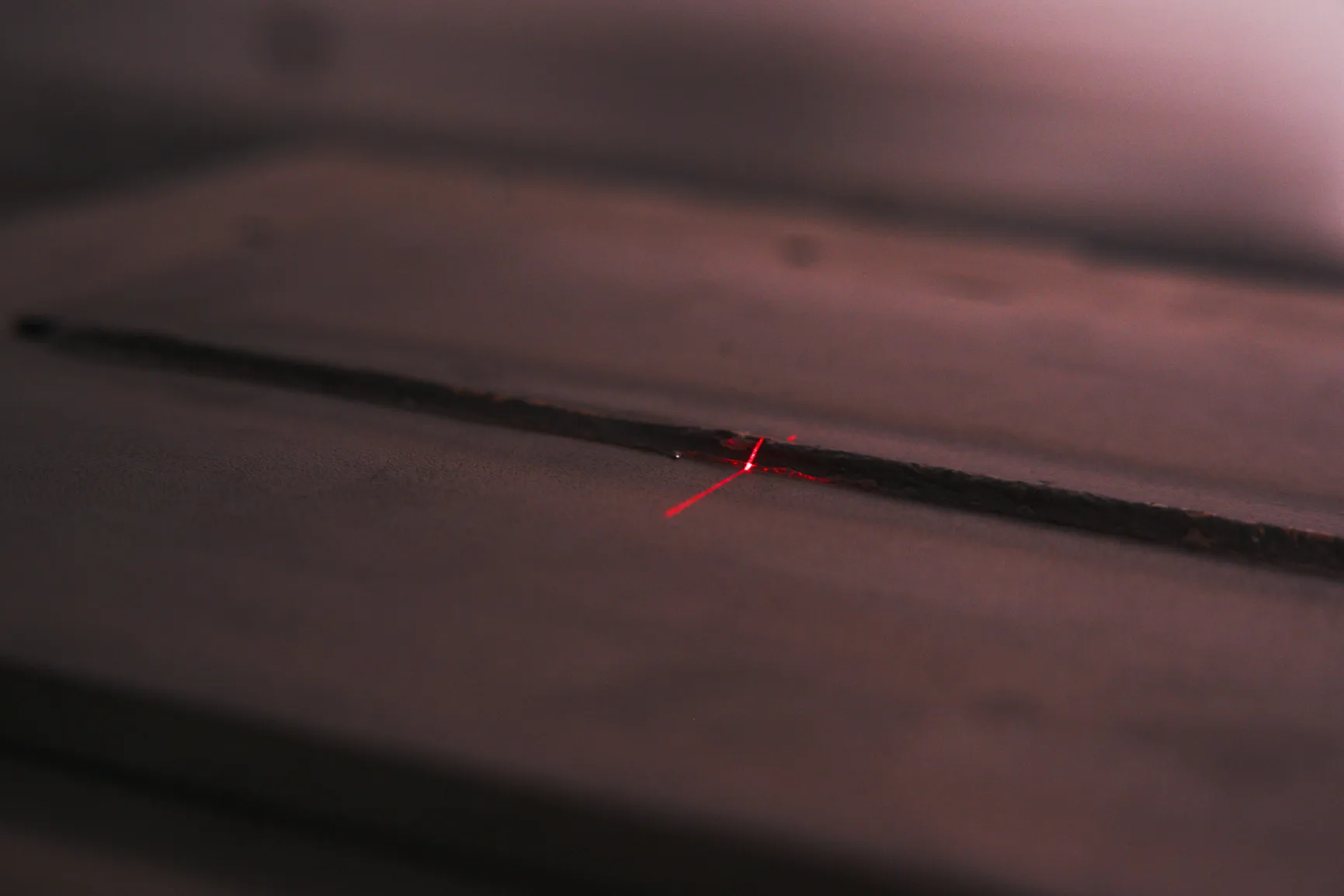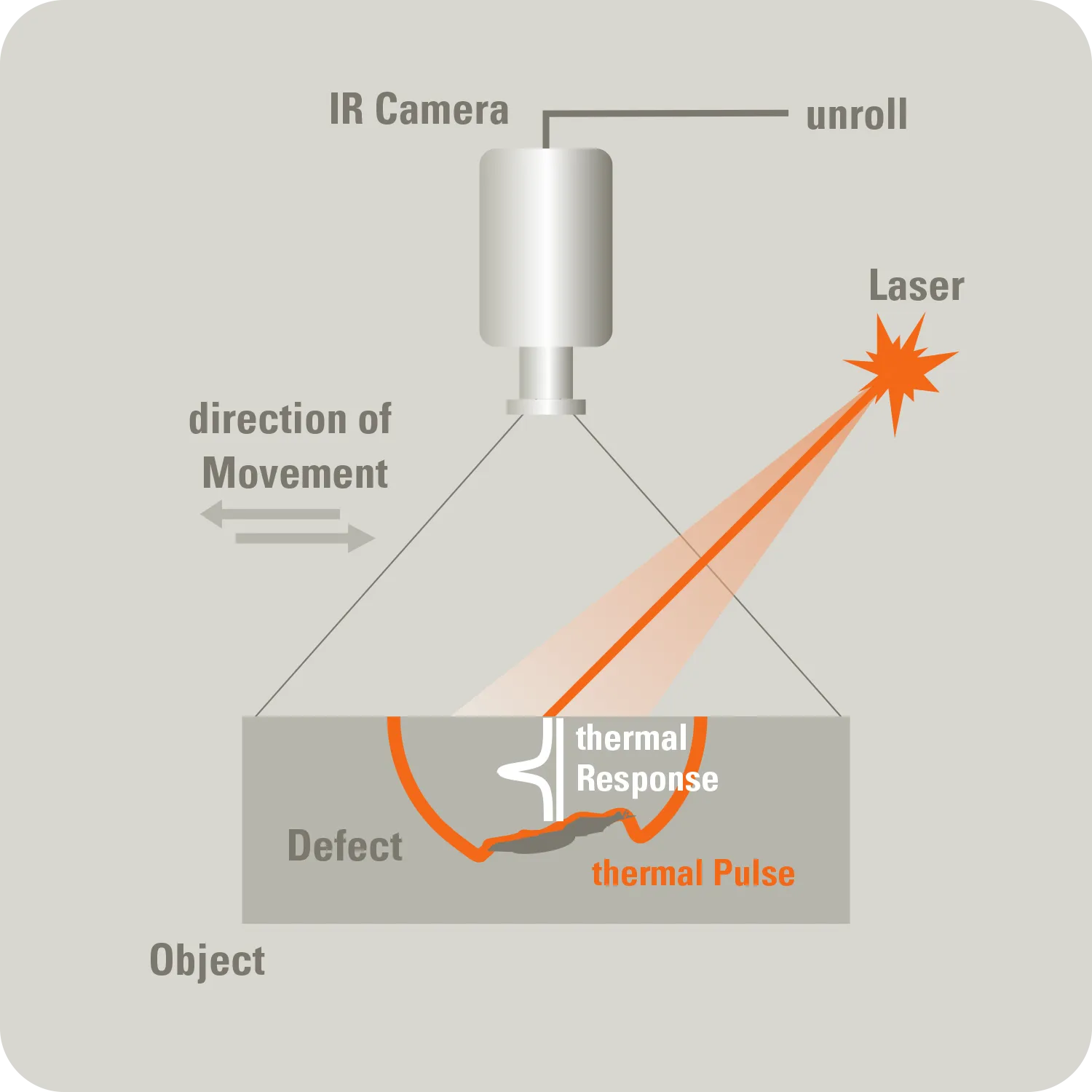Scanning laser thermography
A focused laser spot is systematically guided across the surface. The localized heating is continuously detected to make even the smallest material differences or defects visible with high resolution — ideal for precise surface analysis.

This page covers only scanning (dynamic) laser thermography with relative movement between the laser/camera and the component. General laser thermography is described on the main page.
Important: In dynamic operation, only step excitation is possible.

What is scanning laser thermography?
Benefits
Very high spatial resolution for defects near the surface
Contactless, without chemicals, gentle on sensitive materials
Flexible paths for complex geometries and small features
Clear hot spots, immediately visually interpretable
Applications
Cracks in ceramics, sintered parts, green bodies, glass
Plastics, casting compounds: blowing, delamination, adhesion
Graphite/electrode material: particle and crack testing
Contour parts: gears, holes, edges, 3D shapes
Select scan type
-CFRP surfaces
-Vehicle bodies
-Sheets
-Full coverage
-Perfect for inline systems
-High level of automation
-welds transitions
-narrow structures
-Efficient with defined test geometries
-Fast and resource-saving
-3D components
-Inner radii
-Validations
-Highest flexibility
-Ideal for research or follow-up
Still unclear whether we can test your product?
In a short initial consultation, we will explain how we can provide you with useful support with thermography — clearly, transparently and without obligation.
FAQ
Our frequently asked questions — answered quickly and easily.



